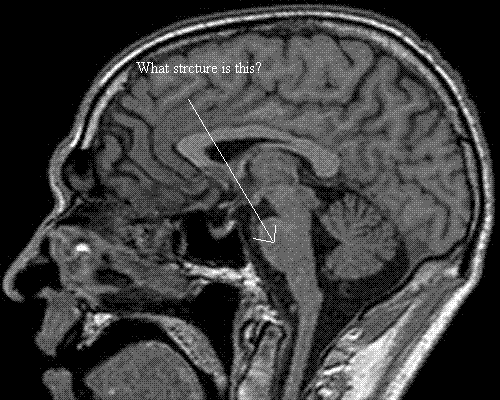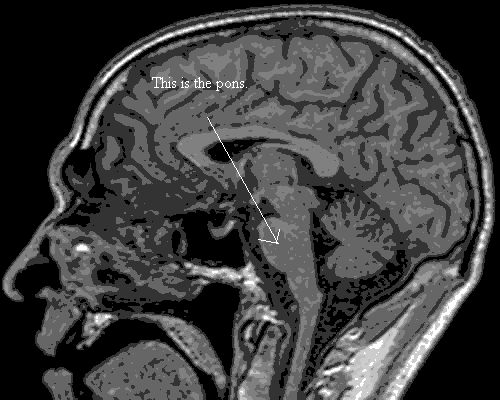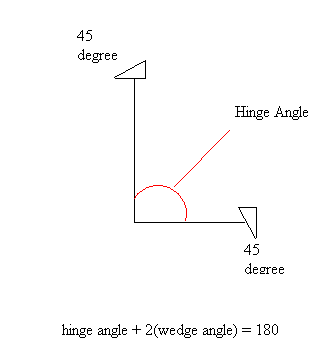 Brain Teaser #13
Brain Teaser #13
A) Question:

A) Answer:

B) Question:
The TD5/5 for the optic chiasm is?
B) Answer:
The TD5/5 for the optic chiasm is 5,000 cGy
C) Question:
The sella turcica has what gland situated in it?
C) Answer:
The pituitary gland is located in the sella turcica.
D) Question:
If two fields are being treated, and they both have two wedges with the heels of the wedge together for the two fields, and each wedge is 45 degrees, what would you expect the hinge angle to be?
D) Answer:
The hinge angle expected would be about 90 degrees.
Follow Up:
Please note, this may not always be the case, but most of the time to get a good dose distribution the following equation can be used:
hinge angle + 2(wedge angle) = 180 degrees
hinge angle is the diffrence in gantry angle between the two fields

In this example, our hinge angle is the variable we are looking for, we will call this x.
x = hinge angle
thus,
x + 2 (45) = 180
x + 90 = 180
x = 90
E) Question:
When treating a whole brain what is the MOST critical structure, and is usually blocked during whole brain irradiation?
E) Answer:
The eye is the most critical structure when treating a whole brain.
F) Question:
What is the TD5/5 for the whole retina?
F) Answer:
The TD5/5 for the whole retina is 4,500 cGy
G) Question:
What is an approximate separation for a whole brain when central axis is going through the middle of the brain?
G) Answer:
16.0 cm is a good educated guess of the separation of a whole brain.
H) Question:
For the first day of treatment 300 cGy was given for a Rt and Lt lateral whole brain. 162 monitor units were given from each field. If everything else remains the same, but the doctor just wants to give 200 cGy a day, what will the new monitor units be? (assume equal weighting)
H) Answer:
The new monitor units would be 108 per field.
Follow Up:
Since this is a linear proportion we can set one up. Remember that the 162 monitor units is per field. So, we must split up the 300 cGy into per field. This gives us 150 cGy/field and with the prescription change 200 cGy is really 100 cGy/field. Then we can set up the following relationship:
----------------------------- = -----------------------------
new prescription new monitor units
thus,
old prescription/field = 150 cGy
new prescription/field = 100 cGy
old monitor units/field = 162
new monitor units/field = X
thus,
---------------- = ----------------
100 cGy X
X = 108
I) Question:
If for the first day you gave 222 monitor units/field instead of 162 monitor units/field for both of the fields when the prescription is 300 cGy/fraction, how much dose did you actually deliver? (assume equal weighting)
I) Answer:
You would have given 411 cGy for that day.
Follow Up:
Again, this is a linear proportion, so you can set up the following:
--------------------------- = ---------------------------
dose delivered monitor units delivered
thus, dose intended = 300 cGy
dose delivered = X
monitor units intended = 162
monitor units delivered = 222
thus,
-------------- = --------------
X 222 MU
x= 411 cGy
THE END
Author: Adam Buell
Editors: Mary Hare
Date Created: December 2005


